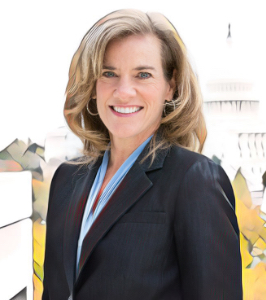SCOTUS decision masks significant shift in the law

The U.S. Supreme Court’s latest school voucher decision sounds simple. Writing for the 5-4 majority, Chief Justice John Roberts said, “A State need not subsidize private education. But once a State decides to do so, it cannot disqualify some private schools solely because they are religious.” While affirming the important distinction between public and private institutions, that seemingly simple holding masks a more significant shift in the law.
The majority opinion and three separate concurring opinions in Espinoza v. Montana Department of Revenue show that five members of the Court have little regard for religion’s distinctive treatment in constitutional law, at least when it comes to government funding for religious institutions. Voucher proponents, including the U.S. Department of Education, wasted no time praising the decision to boost their “school choice” efforts to promote federal funds for private schools.
At issue was a tax credit program that funded scholarships to private, secular schools. BJC filed an amicus brief on the side of the state, not because we support such programs, but because states should be able to avoid entanglement in religious education. In our view, that historic and principled interest is good for religious liberty, rightly protected by state constitutions that restrict aid to religious institutions. The Court majority, however, rejected that line of reasoning. Instead, it continued a trend of treating efforts to avoid funding religious institutions as anti-religious discrimination.
In a case decided just three years ago, Trinity Lutheran v. Comer, the Court invalidated a state’s ban on state funding of churches as applied to a playground improvement grant program. The 7-2 majority in that case emphasized the secular nature of the monetary aid at issue. In Espinoza, the Court invalidated Montana’s ban on state funding of religious schools as applied to its tax credit program. The 5-4 majority opinion conspicuously avoided the religious significance of the state aid at issue. In both cases, the Court found that the federal Free Exercise Clause required the state to fund religious institutions despite state constitutional provisions designed to avoid public funding of religion. In doing so, the Court narrowed any “play in the joints” whereby states may protect against public funding of religion in ways that are not required by the federal Constitution. And, as the opinions of the majority justices indicate, there may be little this Court would find the Establishment Clause requires.
Scholars, advocates and Supreme Court justices have long debated appropriate standards for applying the First Amendment’s two Religion Clauses — free exercise and no establishment. In some cases, the Court has found it difficult to navigate the tension between the clauses. Because both protect religious liberty, BJC urges courts to resist elevating one clause to the expense of the other. Instead, we advocate respect for the balance the drafters so wisely embedded in the Constitution. Our concern that the current court gives short shrift to the Establishment Clause was highlighted during oral arguments. Justice Stephen Breyer seemed exasperated as he asked and answered the rhetorical question: “What is the Establishment Clause? Well, it has something to do with not supporting religion.”
What’s the impact of this decision? Short-term gains for “school choice” proposals are likely. Long-term effects on education and religious liberty are harder to predict. Even absent constitutional barriers, vouchers are controversial for their negative impact on state education budgets and perceived unfairness. Equal access to government funding will inspire demands for equal treatment in regulatory and accountability measures. Religious schools that take government money may find private donations become scarcer. The perceived win for religious schools today may be perceived differently tomorrow.
During oral arguments, Justice Elena Kagan noted the many legitimate reasons for states to treat religion differently that have nothing to do with discrimination. “You might actually think that funding religion imposes costs and burdens on religious institutions themselves,” she said. “You might think that taxpayers have conscientious objections to funding religion. You might think that funding religion creates divisiveness and conflict within a society, and that for all those reasons, funding religious activity is not a good idea.” She is right, and though Espinoza changed the constitutional landscape for school vouchers, BJC will continue to defend the “no aid to religion” principle, which is essential for keeping government out of religion in ways that protect religious liberty for all.
Holly Hollman is general counsel of BJC. For more in-depth analysis on this case from her, see the SCOTUSblog Symposium on Espinoza v. Montana Department of Revenue, where Hollman submitted an essay: What’s “the use” of the Constitution’s distinctive treatment of religion if it is disregarded as discrimination?
This column appeared in the summer 2020 edition of Report from the Capital. You can read the entire magazine as a PDF or a digital flip-through edition.




